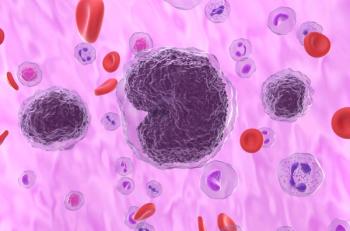
Breast Cancer Death Rates Drop, but Racial Disparities Linger
Data released by the CDC today indicate that while breast cancer deaths are on the decline, black women still have worse outcomes than white women. The report also noted disparate trends in breast cancer incidence among different races and age groups.
While breast cancer deaths are on the decline, black women still have worse outcomes than white women, according to data
Historically, black women have had lower rates of breast cancer incidence than white women, but between 1999 and 2013 the 2 groups’ rates actually converged due to a decrease in incidence among white women coupled with a slight increase among black women. The disparity was especially pronounced when including age as a factor. For women aged 60 to 69 years, incidence rates among white women declined by an average of 0.7% per year, while black women’s incidence rates rose an average 1.3% annually. Between 1999 and 2004, incidence rates decreased only for white women under 50 years old.
Mortality rates and their patterns between 2010 and 2014 also show racial disparities. Breast cancer caused 29.2 deaths per 100,000 black women, compared to 20.6 deaths per 100,000 white women, indicating that mortality was 41% higher for black women. Death rates declined for all races during this period, but they decreased faster for white women. The largest disparity was seen in women aged 60 to 69; the death rates decreased 2% annually among white women, compared to a 1% decrease per year among black women.
Interestingly, mortality rates fell at the same pace for women younger than 50, regardless of race. This data could provide some hope for the future, according to the CDC.
“First, the decline in deaths suggests that white and black women under 50 are benefitting equally from cancer treatments,” Lisa Richardson, MD, director of CDC’s Division of Cancer Prevention and Control,
According to the report, these data could be used to inform public health interventions. The declining mortality rate among younger women supports prior studies that showed screening efforts like mammography have been successful in catching more cancers at an early stage. The report also recommended initiatives to combat obesity, which is increasing in prevalence among black women and is associated with a higher risk of breast cancer.
Advances in breast cancer research at the molecular level could also help address these racial disparities. For instance, genomic research has found that black women are more likely to be diagnosed with triple negative breast cancer (negative estrogen receptor, progesterone receptor, and HER2 status), according to the CDC report. Discoveries like these could be crucial for programs like the Precision Medicine Initiative and the Cancer Moonshot, which strive to develop individualized treatment plans based on the genetic variations that put some women at higher risk for aggressive cancers.
Newsletter
Stay ahead of policy, cost, and value—subscribe to AJMC for expert insights at the intersection of clinical care and health economics.













































